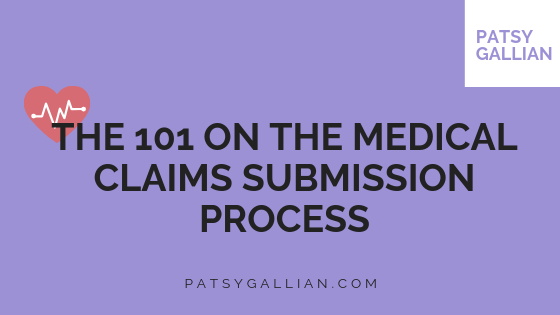Patients typically pay for medical services with medical insurance Healthcare providers submit medical claims to insurance carriers for reimbursement of services rendered.
Charge Entry
A Superbill is used by healthcare providers [physicians] as a primary source of data for creating claims. Superbill has a list of various CPT [Current Procedural Terminology] Codes and diagnosis codes. Physicians select codes that describe patients’ condition(s) and visits. The Billing staff receives Superbill(s) and then enters codes into the billing systems accordingly.
Facilities such as hospitals assign 4 digit codes called revenue codes that represent departments in the facility as follows;
- 0250 Pharmacy
- 0300 LAB
- 0450 Emergency Room
CMS 1500 Claim Form
CMS claim forms are typically used by non-facility providers such as physicians, radiologists, anesthesiologists, etc. Medicare Part B typically accepts CMS 1500 claim forms. NOTE: Medicare Part A processes facility or institutional claims. CMS claim forms do NOT have form locators for Revenue Codes.
UB04 Claim Forms
UB04 claim forms are typically used by facilities such as hospitals, skilled nursing facilities, etc. Unlike CMS claim forms, UB04s have form locators for revenue codes.
Electronic Claim(s) Submission
Claims are batched into groups. The billing software will “scrub” claims for errors. Scrubbing is another term for claim edits. Billers will make necessary corrections, adjustments, etc. The goal is to submit “clean” claims with no errors. Once claims pass the billing edits, then claims are ready for transmission to the clearinghouses via EDI 837 transaction set or files. The clearinghouse will accept batches of claims and then route claims to insurance carriers accordingly. Insurances will then acknowledge claim(s) acceptance and then send responses back through the clearinghouse to providers.
Paper Claims
Some insurances allow paper claim submissions. These claims can either be mailed or faxed.
Payments/Denials
Clearinghouses also communicate whether a claim was paid or denied. This information is transmitted back to the provider via 835 files. 835 files or Electronic Remittance Advice contain payment details. Also, 835 files will typically contain denial details such as denials for medical necessity, no authorization obtain, coverage and coding issues, etc.
Providers rely on proper tools and skilled staff to maximize efficiency which yields a great patient experience, efficient claims submissions which positively enhances their bottom lines. Sticking to the process, as well as a deep understanding of its complexities and nuances, help medical billing go as smoothly as possible.
